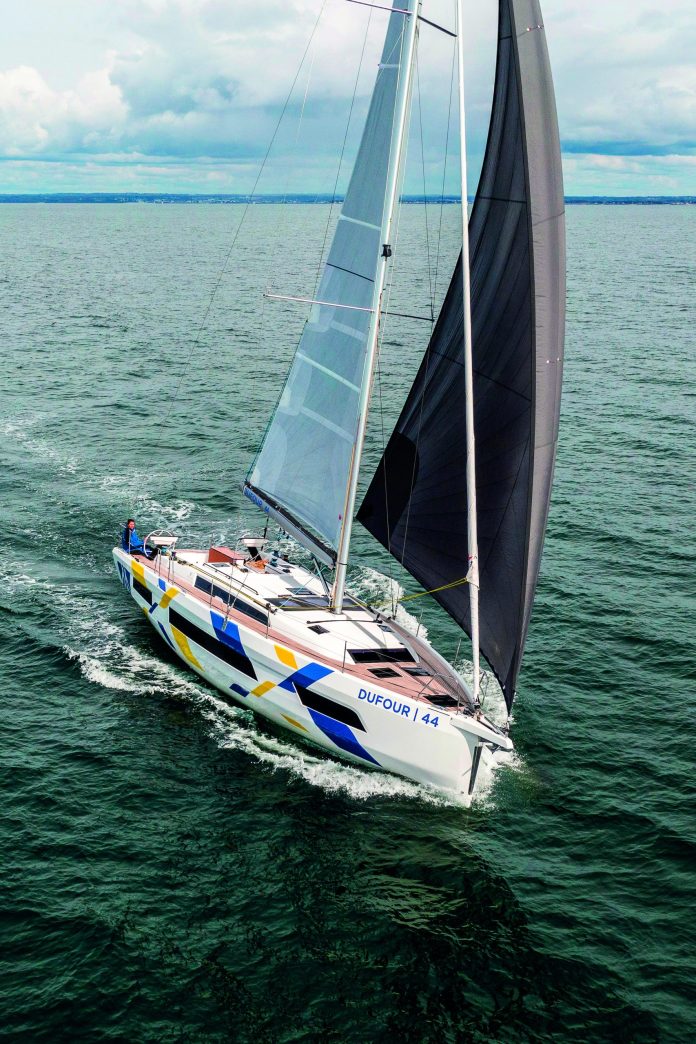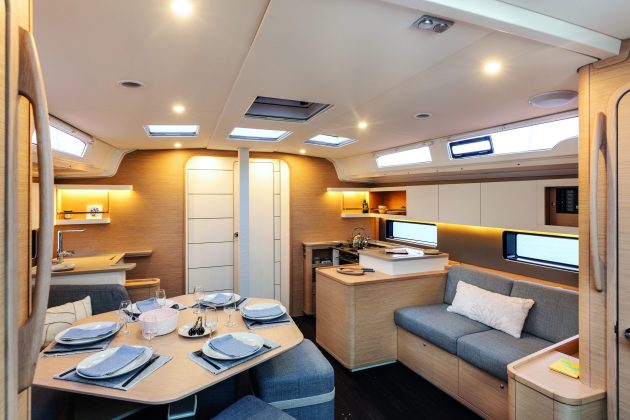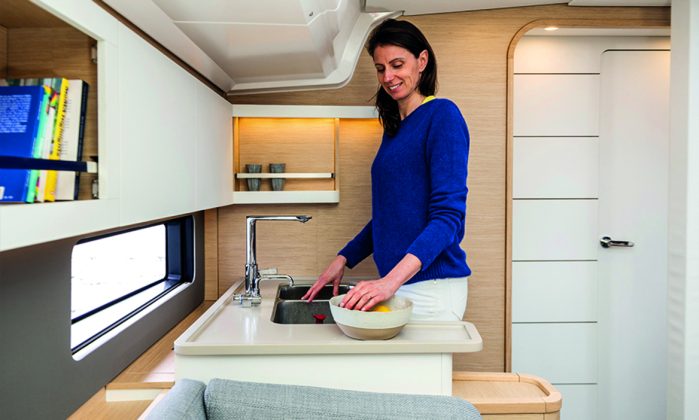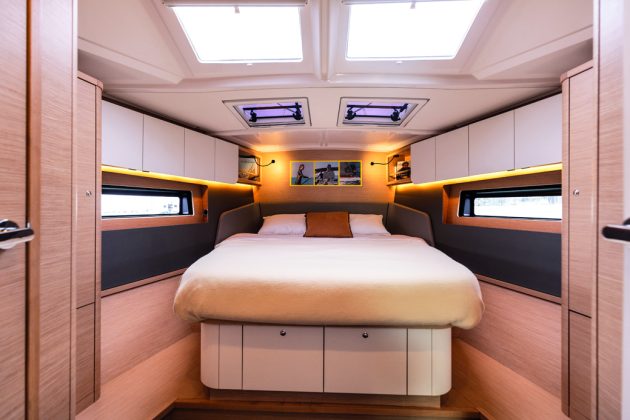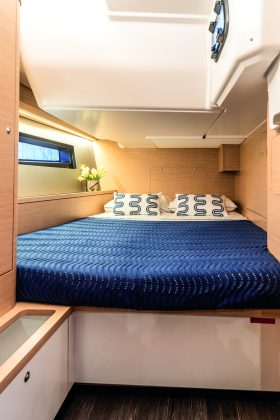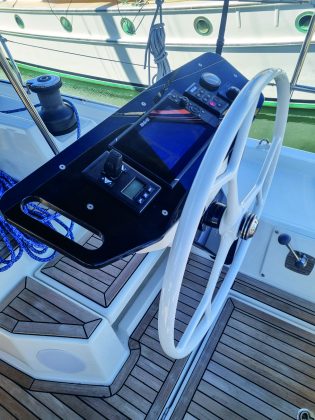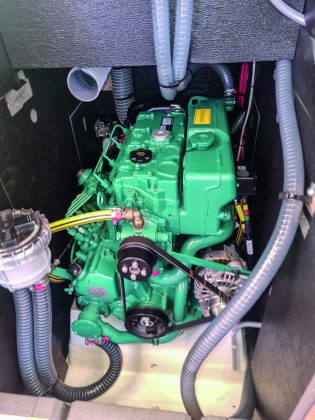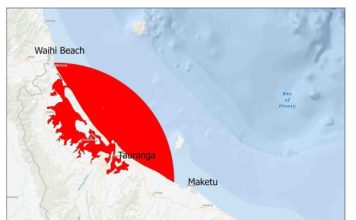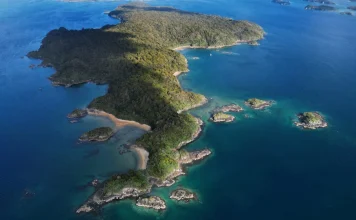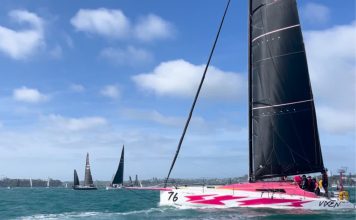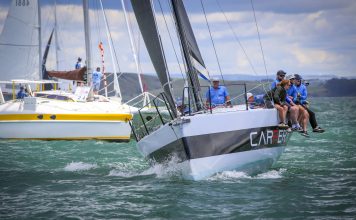The Dufour 44 typifies modern high-volume cruising designs, yet at 44 feet, it is a manageable package for a couple going offshore because there’s an easily operated sail plan and plenty of storage space. The 44 is the mid-range model in a six-model lineup (from 37 feet to 54 feet/11.3m to 16.5m). Interestingly, all are now offered with electric auxiliary power apart from the 37-footer. The company knows plenty about good design, having built yachts for 60 years at its La Rochelle yard, a place I enjoyed spending a few days at some years back, where I got a good feel for the workmanship that goes into these boats. Under founder Michele Dufour, the yard was known for performance cruisers, but after several changes of ownership – and now owned by Fountaine Pajot – Dufour concentrates on general cruising yachts, designed by Italian Umberto Felci since 2003.
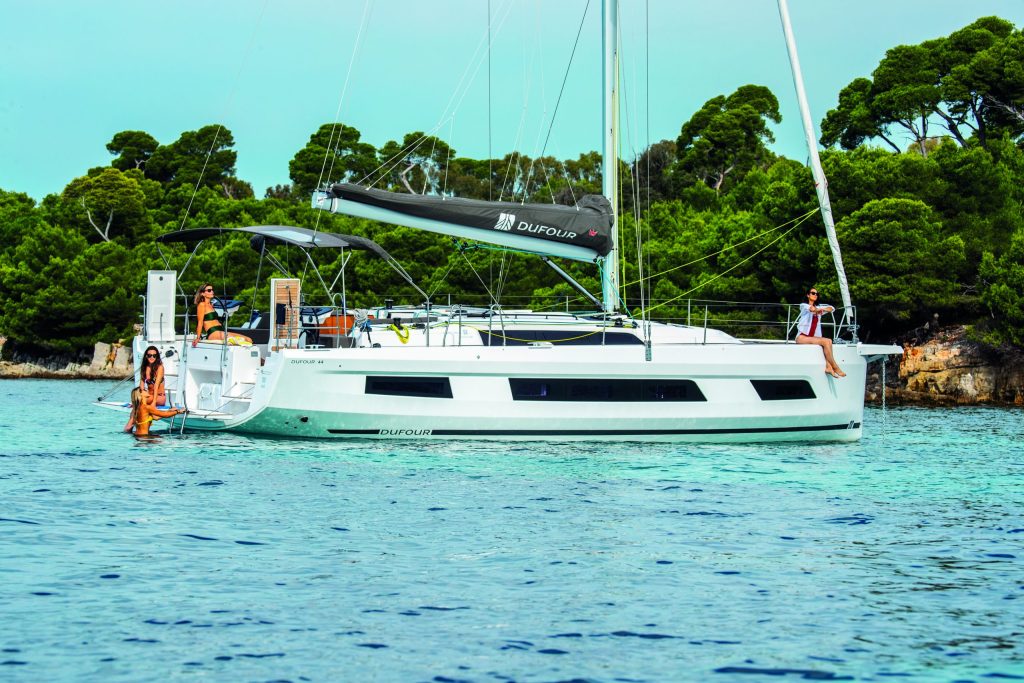
The Dufour 44 made its debut in Australia at the 2025 Sanctuary Cove Boat Show in Queensland, where, during four glorious days of sunshine, dealer The Yacht Sales Co. hosted many interested visitors. Apart from this slick, angular design, which is signature Dufour, there were few other monohull cruising yachts on offer. Yet, as I’ve often said, the 40-45-foot monohull is an ideal cruising boat, and of course nothing goes to windward like a deep-keeled yacht. Perhaps its vast beam of 14.6 feet (4.45m) compromises upwind performance a little, but the modern cruiser must have the volume for the lifestyle requirements of the modern buyer. This generous beam allows for up to four cabins and four heads, which is ideal for charter work, should you want an income from your investment.
Our review model was hull number 11, a stock boat, which came with three cabins and two heads, with the owner’s island berth cabin the most spacious. This is ideal for the cruising couple hosting occasional guests. The airy saloon has generous natural light from elongated portlights and large skylights throughout. Interesting features include the height-adjustable hexagonal table and the three Ottomans that combine with the starboard couch to become a berth. The light wood finish further brightens the layout, including around the forward galley.
Dufour continues with the galley-forward layout, which can also be oriented longitudinally. This sparked heated commentary at the boat show, especially from those traditionalists who saw this layout as both intrusive to loungers and a fire hazard. By way of mitigation, there are three opening hatches above the galley areas – on both sides of the boat – and the galley configuration does free up the main part of the saloon, allowing split ablutions aft for the guest cabins. Galley fixtures include double sinks portside, and an LPG stove-oven to starboard, where there is also a chest fridge. Two people can easily work together in this layout.
The aft berths are the most comfortable at sea, but European-style stern-to mooring often predicates a large cabin forwards to give the owner more privacy. Here, the queen-sized bed has separate memory foam mattresses, access on both sides and storage beneath. Headroom is ample thanks to the tall topsides, allowing plenty of space for lockers and shelves. Ventilation and natural light is also superb, especially with the man-sized twin skylights. Also good is the separate shower and head, located on either side of the island berth.
Looking aft, the two symmetrical double cabins retain sufficient volume, despite being under the cockpit, and they have the second bathroom nearby as well. Again, locker space is generous and natural light ample from the elongated portlights.
Topsides
Boarding the Dufour 44 is best done via the swim platform and into the cockpit, because its topsides are tall. But whatever boarding method, the rewards are there because the cockpit space is as large as on some fifty-footers. There’s even a barbecue integrated into the transom.
Wisely, this Australian stock boat is protected by a sprayhood and twin canvas biminis shading the entire cockpit. This area, along with the swim platform, has been optioned in teak for superior comfort in bare feet, and the companionway hatch has my preferred barrier – a sliding washboard. Twin binnacles are divided by a large table housing a B&G plotter, along with additional screens on each binnacle.
The throttle is down at ankle height to starboard, while the tunnel thruster paddle is up at the binnacle, so not the greatest of ergonomics. Lewmar steering includes comfy composite wheels, which I enjoyed using, even during heated moments of racing, with sufficient diameter for me to sit out when required. Interestingly, despite the vessel’s large beam, only a single rudder is used. Sail controls include twin Lewmar electric winches on each side, for mainsail and headsails.
Our review boat’s sail plan of 108% genoa and slab-reefed mainsail was ideal for most conditions, also providing the oomph required for club racing, but short-handed couples may choose to use the self-tacking headsail because the track is included. As with other models, three sail plan options are available: Easy, Ocean and Performance. Ours was the Ocean, while the Easy uses the self-tacker and the Performance adds a deeper keel and a mainsail track in the cockpit. There was no track on ours, so tweaking and twisting the mainsail was slightly limited because it relied on blocks.
The review boat had Elvstrom performance cruising sails, which set really well, bent onto a Z-Spars alloy mast with wire shrouds and double backstays. At the bow, the signature GRP beak ideally separates asymmetric spinnakers from the main sail plan while also housing the anchor, its deep chain locker, and the vertical Lewmar windlass. Also, there is a deep sail locker forward, which benefits from the 44’s full bows.
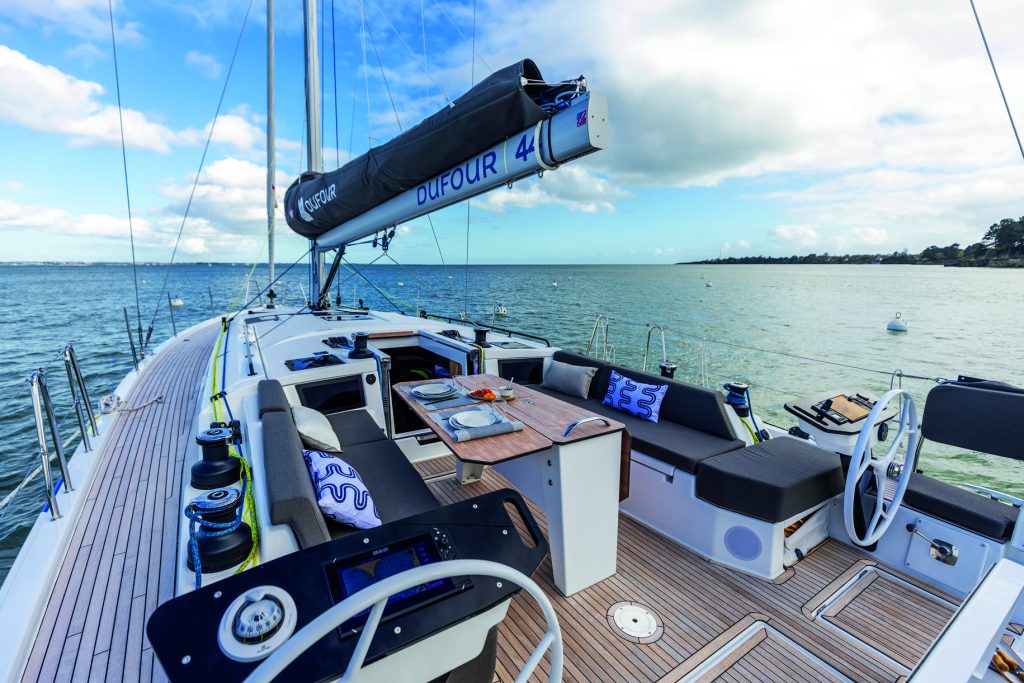
Hull and systems
The resin-infused, foam-cored vinylester hull has deep forward sections with a contemporary snub bow and a vertical transom to maximise waterline length. The deck is injection-molded foam for insulation and weight-saving. The hull shape is remarkable for its old-fashioned tumblehome achieved through the clever use of chines, with the top one rounding the gunwales slightly. A lower chine can give some linear stability when the boat’s well-heeled.
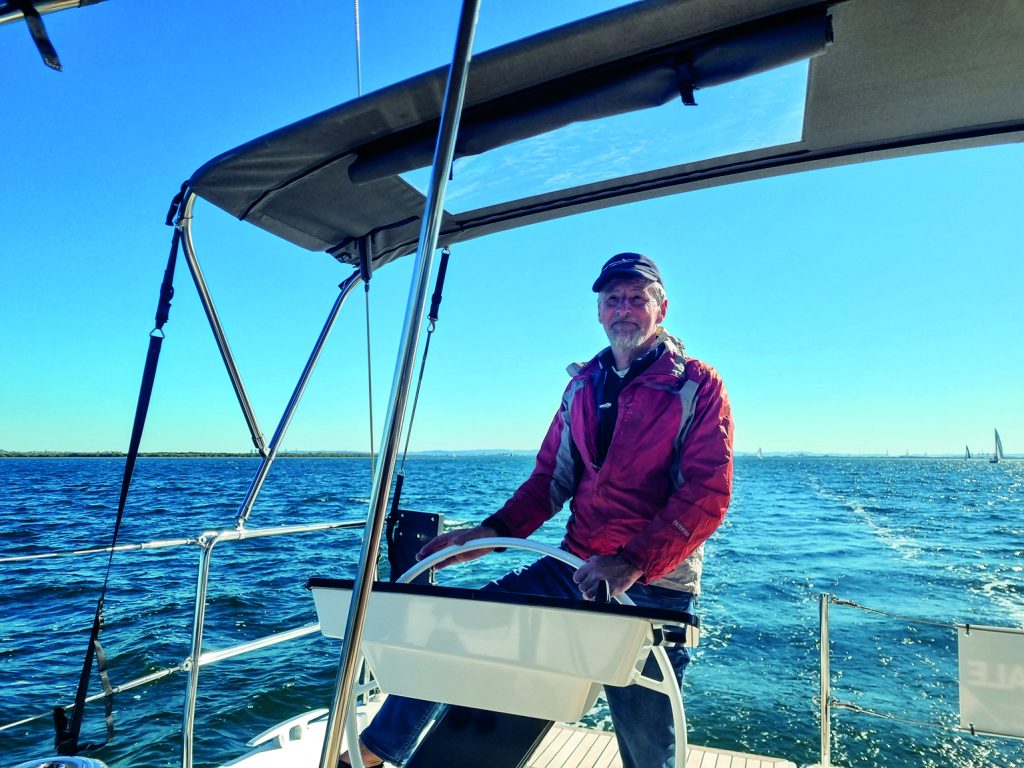
Like all modern cruisers, the beam continues to the stern. Other Felci characteristics include the upright sides, while the vast beam does aid form stability, rather than relying solely on the cast-iron L-shaped keel. The ballast ratio is a modest 27.9%, but like many modern designs, stability comes from the wide beam and hull volume, while a sail area-displacement ratio (SAD) of 21.05 puts the 44 in the moderate-weighted cruiser class.
Continuing with the Felci signature features, it does have a fine waterline entry, but with full volume above. Surprisingly, the wide hull only uses a single rudder. Felci researched single and twin rudder options before deciding that the single was sufficient, even with full sail in more than 25 knots of breeze. An upside is that it gives more feel on the helm than twin rudders, which I can attest to. A single rudder also makes the boat easier to handle in harbour, thanks to the prop wash over the rudder.
Lifting the main hatch steps reveals the four-cylinder 60hp Volvo saildrive, which showed most key service points accessible, and there’s also side access. Our boat had a folding propeller.
Racing
Joining the Royal Queensland Yacht Squadron for a mid-week race proved exhilarating, thanks to 15-knots-plus of breeze – the ideal amount to move the 10.2-tonne Dufour 44. Moreton Bay, near Brisbane, is a familiar waterway to me, but despite its vast size, it is actually a myriad of shallows. So, you must watch your lay lines or come to a muddy halt. Motoring out at a nice clip (6.8 knots with the Volvo spinning at 2,200rpm), we made ready for sail. The electric Lewmar easily hoisted the Elvstrom mainsail, and a pull on the furler line quickly released the genoa just before the race start.
Along with about 30 other boats, we set off on a beam reach. On the helm the feedback felt good, and despite our wide beam sticking us to the calm water relative to some other older cruisers, we kept up with the fleet, doing 7.8 knot at 50° apparent. Gybing around the far mark was easily done, the big hull spinning quickly as we took off and then began hardening the sheets. And this is where the Dufour 44 really excelled. As boats converged at the wing mark, squeezing me tightly at the rounding, we sheeted in hard and began out-pointing several fancied competitors, doing about 30° while fully sheeted and hitting speeds of nearly eight knots. Impressive and enjoyable; apart from the lack of foot chocks.
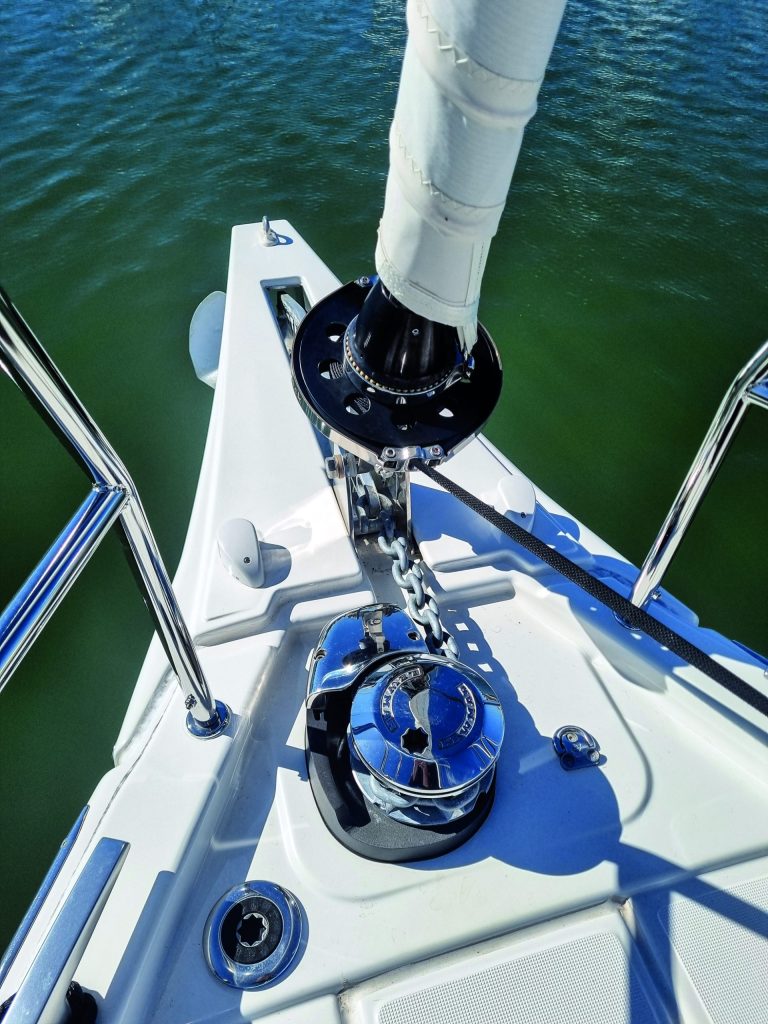
As gusts bounced off the low-lying islands, the rudder load feedback was good, signalling when
I should call on the crew to ease the German mainsheet from either side of the wide cockpit. For serious racing mode, we would have folded the bimini back, because it slightly obscured the mainsail, but sitting out showed me the genoa telltales clearly, which made it a fun race. This Dufour 44 really surprised me with its speed, albeit in ideal conditions, so très bon, as they say in La Rochelle.








